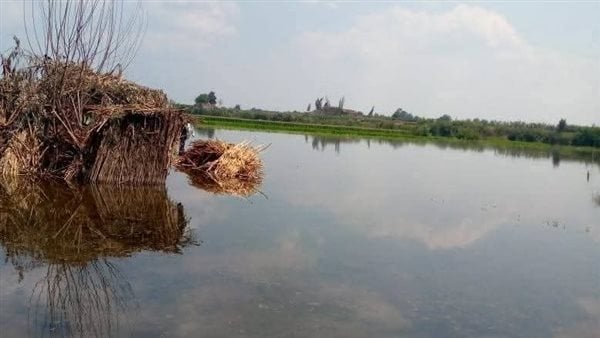Egypt Prepares for Potential Floods.. Al-Menoufia Authorities Request Evacuation of Riverbank Lands

Egypt has entered a state of alert in anticipation of potential flood waves, as local authorities have requested citizens to evacuate riverbank lands, following official warnings from the Prime Minister about an unusual rise in the Nile River's water level, amid debates about the actual risks and the impact of the Ethiopian Renaissance Dam.
The Presidency of Ashmoun Center and City in Al-Menoufia Governorate urged all citizens and farmers residing in riverbank lands on Friday to evacuate those lands and their homes, "due to the rising water level in the Nile River branch in the city".
The presidency clarified in its statement that "the large flow of water could lead to flooding most of the riverbank lands as well as the buildings located along the banks of the stream," urging "all citizens in the city's villages and those residing on riverbank lands to exercise caution and avoid any cultivation at present, and to quickly evacuate their homes for their safety".
These local alerts came just hours after Dr. Mostafa Madbouly, the Egyptian Prime Minister, announced that two Egyptian governorates are at risk of floods and large water flows in their riverbank lands.
During his weekly press conference on Thursday, following a Cabinet session, the Prime Minister warned that "predictions for October indicate that the water discharge will be greater than average levels, and there will be some riverbank areas and huts that will be flooded, especially in Al-Menoufia and Beheira in the north of the country".
Madbouly warned "all encroachers on riverbank lands," affirming that "all riverbank lands could be flooded with water during this period as part of the flood control measures, as these lands are an integral part of the Nile River's water sector".
The Prime Minister linked the crisis to regional tensions over water, reiterating "the assertion that Ethiopian actions are behind the floods in Sudan, especially after the unilateral water discharge," calling for the necessity of "binding agreements for the operation of the Ethiopian dam".
For his part, Dr. Abbas Sharaki, a professor of water resources at Cairo University, downplayed the risks of floods in the two Egyptian governorates, confirming that "the High Dam regulates the water level of the Nile throughout the year and usually the riverbank lands are not flooded, which encourages farmers to utilize them and lease them from the Ministry of Irrigation, except for some low-lying areas that flood significantly".
He added in statements to media outlets that "the government's warnings are justified to confront future risks due to the rising water level of the Nile, although all farmers know that these lands may receive water at any time of the year, and they have no right to request compensation in case of flooding," explaining that "due to the rarity of such occurrences, they tend to cultivate these lands without potential fears".
Sharaki confirmed that "the High Dam is fully prepared to receive the new annual inflow," noting that the water flow began "in early September with quantities exceeding 600 million cubic meters daily, due to discharges from Sudanese dams and then higher discharges from the Renaissance Dam, especially after its inauguration on September 9".
He pointed to the emergency mechanism, saying: "As the level of Lake Nasser approaches 182 cubic meters, the Toshka spillway is opened to discharge the excess water, especially if the rains continue heavily, and the Ministry of Irrigation may have to pump additional quantities along with daily uses and discharge them into the Mediterranean Sea via the Edfeina sluices on the Rosetta branch," adding that "this could lead to a rise in the Nile level and flooding some of the lower riverbank lands, as is the case in Al-Menoufia and Beheira".
This comes at a time when neighboring Sudan is experiencing a wave of floods threatening residents and farmers. The Sudanese Ministry of Irrigation and Water Resources has urged citizens living along the banks of the Nile to take necessary measures to protect their properties and lives, after several stations, states, and rivers reached flood levels.
The ministry confirmed via its Facebook page last Tuesday that the Nile levels continue to rise during this week, indicating that "the Blue Nile inflow has decreased to 699 million cubic meters daily, and the discharge from the Roseires Dam has been reduced to 613 million cubic meters".